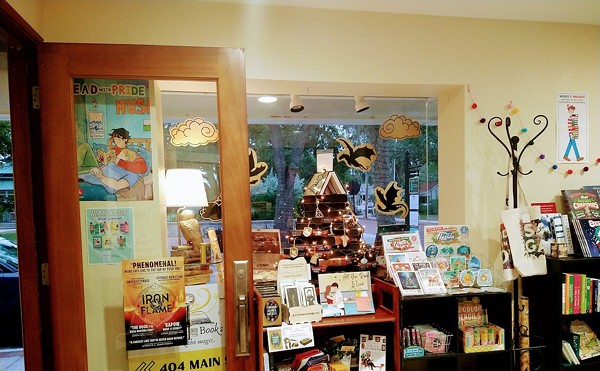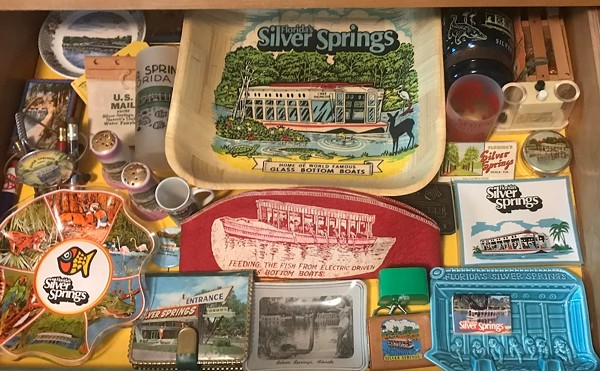The Art of Horror: An Illustrated History (Applause Theatre & Cinema Books Hardcover; November 2015; $40) landed on CL's desk at a time when appreciation of vintage horror is at an all-time high, evidenced by Second Screen's recent showing of Dario Argento's Suspiria and del Toro's nostalgic and sweeping Gothic romance Crimson Peak.
The marvelously massive anthology weighs nearly 4 pounds and boasts a lovely matte paper stock with impeccable image quality. Editor Stephen Jones has curated more than 500 fantastical and creepy images with a beautifully penned foreword by Neil Gaiman (a tease, but a tasty one, for sure).
Jones's intro is more serviceable than a delight to read. His ability to recognize mythological and religious origins of monsters and scary phenomena is on point, showing how humans have come up with scary monsters and super creeps as a way to survive life's grotesque tragedies.
Contemporary paintings, vintage movie posters and older masterpieces depict the mythological and archetypal. The Art of Horror enchants page after page with vivid, deep-hued color photos, historical passages and illustrations representing art, literature, film and other realms of the horror genre. The book goes back before the invention of movies, to Bram Stoker's Dracula and Mary Shelley's Frankenstein in the 19th century, but focuses the majority of its content on 20th and 21st century representations of horror, blending contemporary works with old book covers and posters. Jones and his team of 100-plus contributors have sourced visuals from archives and private collections around the world for this exquisite compendium.
From the gatefold reproduction of Hieronymous Bosch's "Garden of Earthy Pleasures" to Neal Russler's "Formaldehyde Face," monsters, ghosts, half-beings, and the great minds who invented them, are celebrated. Some stunning historical passages include lesser-known pulp novels and "true ghost stories" of the mid-20th century. The Art of Horror reveals how illustrators could by hand, without the aid of Macs or Adobe software, capture light and darkness with stunning accuracy. The full-page stunner "The Front Watcher" by digital artist Steve Kaline is a chilling piece that sets the mood with subtle layers that belie its electronic enhancements.
Illustrations are further fleshed out with background info and quotes from the artists. For his 1990 work, "The Wolfman of Old London," Greg Staples says his work was conceived as a personal piece. "I wanted to play with the nighttime shadows against the deep red of the blood."
In his intro, Gaiman reminds us how fun horror is, how the most creative monster-makers are the most mild-mannered and pleasant people you know and how famous funny people tend to be the darkest. While he doesn't demystify the impact of the images contained, he, and the anthology's other contributors do a commendable job of getting behind the primal impulses that bring horrifying beings to life.
Beasts, demons and ghosts are brought into context, offering a great primer for teens and pre-teens and non-horror enthusiasts. Hardcore horror lovers may gain a little less information-wise from the book but will have a beautiful picture book to escape life's real-life's horrors with.















